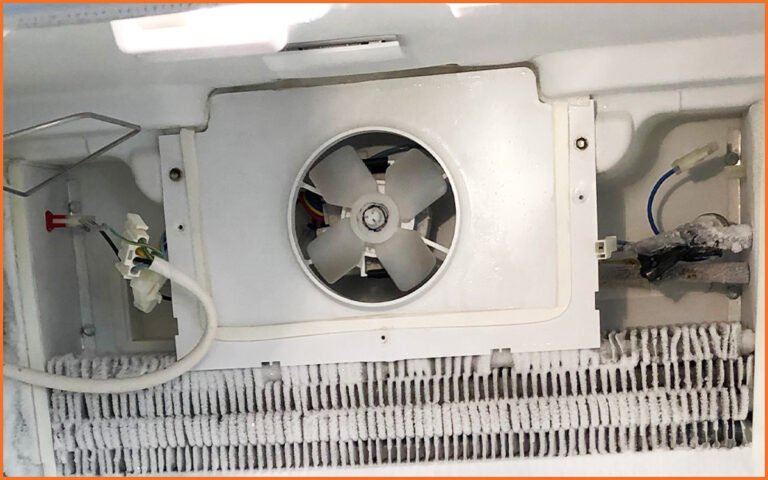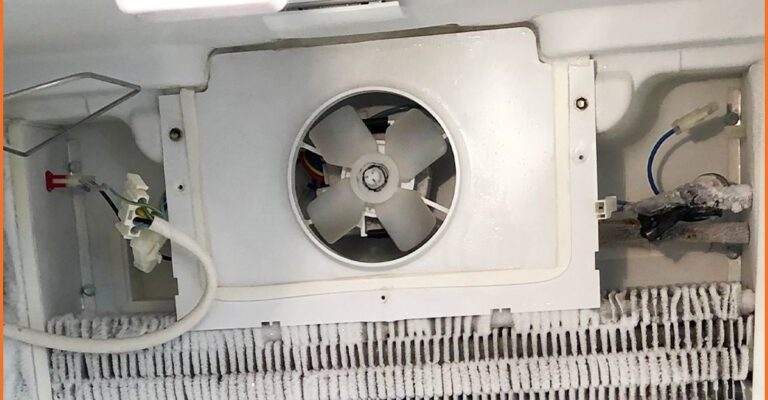
Simply put, error codes are your refrigerator’s way of telling you something’s wrong. It’s like when your car’s check engine light comes on—ignoring it won’t make the problem go away. The F2 error is related to a cooling issue. If not fixed, it can lead to more significant problems over time, much like that leaky roof that turns into a major repair project if ignored. So let’s break it all down. What does it mean, why should it be addressed, and how can we prevent a small problem from turning into a big one?
Understanding Error F2 on Your Samsung Refrigerator
First off, what exactly does this error mean? The “F2” code is your fridge’s way of alerting you that there’s a problem with the compartment sensor. Think of this sensor as the thermostat for your fridge. It keeps an eye on the temperature inside, ensuring everything stays at just the right chill level. If this sensor runs into issues, it can’t do its job accurately, much like trying to bake a cake without a functioning oven thermometer.
When the sensor malfunctions, it sends incorrect temperature readings to the fridge’s control system. This can cause the appliance to run continuously, using more energy than necessary, much like leaving the lights on in every room all night. This might not only increase your electricity bill but also put unnecessary strain on your refrigerator’s components, potentially shortening their lifespan.
Now, it’s crucial to understand that this problem won’t just fix itself. Ignoring the F2 error could mean your refrigerator won’t cool properly. This might spoil food faster, leading to waste and costing you more money in the long run. Imagine planning a dinner party, only to find your ingredients spoiled because of a dodgy sensor. That’s not a surprise anyone wants!
Common Causes of Error F2
You might be wondering, what actually triggers this pesky error? There are a few usual suspects. The most common cause is a faulty temperature sensor. Over time, parts can wear out—it’s natural. Just like an old pair of sneakers that have been around the block one too many times, the sensor can lose its ability to perform accurately.
Another potential culprit could be wiring problems. If the wires connecting the sensor to the control board get damaged or loose, they can interrupt the communication between these components. Imagine trying to listen to your favorite song on a scratched CD—the experience is choppy and frustrating, just like the data transmission in your fridge when there’s a wiring issue.
Environmental factors can also play a part. If your refrigerator is in an area with poor ventilation, it can affect its cooling efficiency and contribute to sensor issues. Think of it like trying to run a marathon without enough water—you can do it, but it’s not ideal and could lead to overheating.
Consequences of Ignoring the F2 Error
You might be tempted to put off dealing with this error, especially if your fridge seems to be working fine for the moment. But here’s the deal: ignoring it can lead to more significant problems down the line. If the temperature sensor continues to malfunction, your fridge could either overcool or undercool. This inconsistency can be quite the headache, much like having your heater and air conditioner battling for control in your home simultaneously.
Overcooling can cause your fridge to work harder than necessary, leading to higher energy bills and unnecessary wear and tear. On the flip side, undercooling could spoil food, leading to unpleasant odors and potential health risks—no one wants to open their fridge to a moldy surprise!
In the worst-case scenario, ignoring the error could result in more severe mechanical failures. Much like ignoring a toothache can lead to root canals, neglecting this error might end up costing you significantly in repairs or even a replacement fridge.
Steps to Fix Error F2
So, what can you do if you encounter this error? Finding a solution can be straightforward if you follow a few steps. First, reset your refrigerator by unplugging it for about five minutes. This action is like rebooting your computer when it’s acting up—it gives the system a fresh start. After plugging it back in, check if the error persists.
If the problem continues, it might be time to inspect the sensor and wiring. You can do this with the help of a professional technician who knows these machines inside and out. Think of them as the fridge doctors—they’ve got the expertise to diagnose and repair issues effectively.
Preventative maintenance is also a great approach. Regularly cleaning the coils and ensuring the fridge is well-ventilated can prolong its life and efficiency. It’s like giving your car regular oil changes to keep it running smoothly.
Preventing Future Error F2 Issues
Prevention is always better than cure, right? To keep error F2 at bay, ensure your refrigerator has ample ventilation space around it. This ensures it operates efficiently, much like letting your computer cool down to prevent overheating.
Regular maintenance checks are also beneficial. Schedule routine inspections with a professional to catch and address potential issues before they become costly repairs. It’s like going to the dentist regularly to prevent cavities—much easier than dealing with a root canal!
Lastly, keep your fridge clean and organized. An overstuffed fridge can cause uneven cooling, making the sensor work harder. Think of it like trying to find a book in a messy room—it’s so much easier when things are tidy and in their place.
In conclusion, addressing error F2 sooner rather than later can save you a lot of hassle and expense. By understanding what it means, identifying common causes, and taking proactive steps, you can keep your refrigerator running smoothly. Remember, your fridge is an essential part of your home, and keeping it in top shape benefits your food, your wallet, and your peace of mind.
